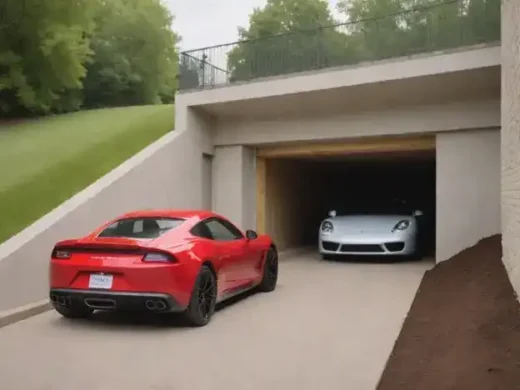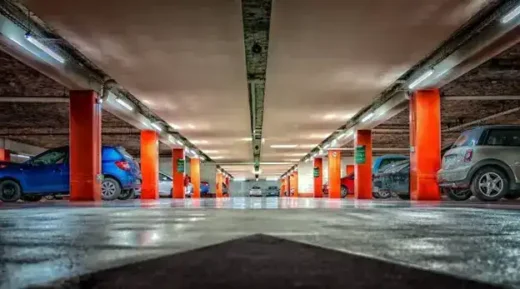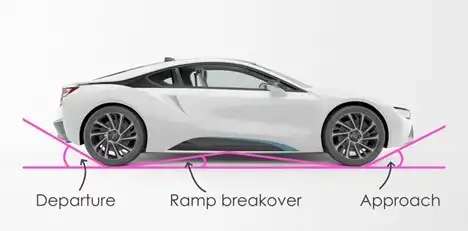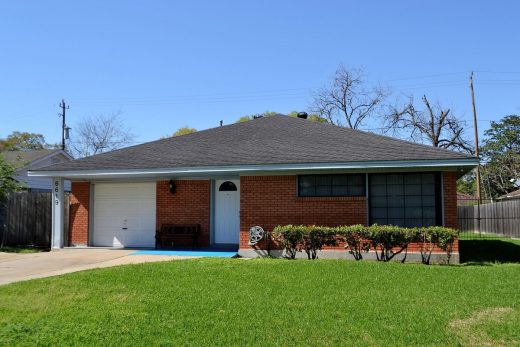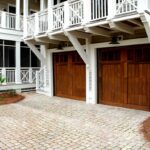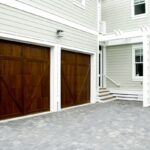Subterranean garage construction build, House vehicle space tips, Secure protection for parking cars
Practical considerations for constructing a subterranean garage
post updated 29 May 2025
How to build underground garage advice guide:
In some locations, it’s impossible to build a street-level garage on flat terrain without compromising the space available for residential or commercial occupation due to height zoning, land area or impermeable surface laws. Building a subterranean garage is much more flexible, especially if the building owner wants to develop a substantial space for vehicles.
In a commercial setting, this means car parking for visitors and staff, whereas in a residential setting, this could be for an owner’s collection of vehicles, or to create a combined garage/recreation space.
Building an underground garage, however, presents significantly more complexity regarding engineering, design, drainage and access. It is far easier to build an underground garage before any other structures are created. However, very little is impossible if you have the money.
April 19, 2024
Underground Garage Construction Planning
Subterranean garages require a lot of excavation. Geotechnical surveys are required to determine how much structural support is required for the building above. Retaining walls will be required, but the impact on neighbouring buildings may require these to have significant structural strength to avoid subsidence.
If the geology is rocky, excavation can be time-consuming. If the geology is soft, the foundations may need to be very deep for the building on top. For projects requiring precise excavation work in confined spaces, a mini digger for hire can provide the maneuverability and control needed for underground construction while minimizing disruption to surrounding structures and utilities.
Vehicle access – Driveway Gradient Advice
Driveways from street level down into the garage must comply with local rules for maximum gradients and lengths; these will vary between residential and commercial. For the sake of simplicity, we will assume that there will usually be a certain distance from the footpath that needs to be flat (or fundamentally flat) because approaching a footpath from a steep angle reduces the visibility of pedestrians and other vehicles entering the driveway.
There will then be a change in gradient down into the driveway. This change is called the ramp breakover. This needs to be sufficiently shallow so as not to beach low-riding vehicles such as sports cars. This is notoriously difficult in surgical clinics where the people parking in the car park (i.e. specialist surgeons and consultants) often drive sports cars and hyper cars.
At the bottom of the driveway, the gradient again needs to become flat for the garage. The change in angle here has to reflect realistic approach and departure angles for vehicles.
To give you an idea of realistic angles, these are the approximate angles for two different types of vehicles at either end of the spectrum: Jeep Wrangler Sport: 41.5 degrees approach, 31.6 departure, 21.5 ramp breakover Porsche 911: 8 degrees approach, 14 departure, 11.7 ramp breakover.
The angles also matter for maintenance. A scissor lift is usually used for maintaining services such as power, drainage, light bulbs and so on which are affixed to the garage roof. All operators must have scissor lift training, so that they understand critical aspects such as the gradeability of the scissor lift (whether it’s capable of driving up and down the ramp.)
For areas where slightly more headroom is available, car stackers can increase the parking capacity.
Managing water
Because the driveway flows down towards the garage, drainage and overland flow are crucial to get right, otherwise the garage will flood. The driveway may require multiple channel drains across the width to capture flowing water. If the garage is deep, there may need to be a pump installed to pump any water back up to municipal drainage in the street.
Detention tanks can be installed to provide a buffer for overloaded drainage systems.
Properties that are susceptible to flooding or have stated overland flow paths may not be eligible for an underground garage due to the impossibility of drainage in a flood scenario.
Managing pest issues in subterranean garages
Stephen Scott, a pest control specialist in Richmond, highlights the importance of addressing pest prevention when constructing subterranean garages. “Underground structures are prone to pests like rodents, ants, and termites, which can enter through small cracks or drainage systems,” Scott explains.
He recommends sealing entry points, using pest-resistant materials, and ensuring drainage areas have covers to prevent pests. “Moisture buildup in ramps and shaded areas can attract insects, leading to potential structural damage,” adds Scott. Regular inspections can help catch early signs of infestations.
Fire prevention
Subterranean garages may need fire protection systems, particularly given the intensity of electric vehicle fires and how difficult they are to extinguish. This will mean a solid concrete roof with fire collars where services penetrate the residential or commercial area above.
Traffic management
For larger commercial garages with narrow entrances, a traffic light system may need to be installed to manage vehicle movements and avoid clashes on the ramp. These work on pressure plates or induction loops embedded into the ground.
Ramp Lighting and Security for Garages
Ramps down to garages are often shaded. For both residential and commercial subterranean garages, automated lighting triggered by passive infra-red sensors and/or pressure plates.
Keeping your subterranean garage pristine
Now that you understand the practical construction issues, it will take some work to keep your garage looking like new. Ramps create collection points for litter and leaves that are washed down the ramp. These can block channel drains and, at best, simply look untidy. Regular cleaning and maintenance are required. If the ramp’s sides create an area that’s shaded most of the day, moss will grow, and that can be slippery for pedestrians.
A subterranean garage will increase your property’s value, but don’t go into it blindly. Engage consultants to explain the risks.
Comments on this guide to Practical considerations for constructing a subterranean garage article are welcome.
Garages
Garage Articles
5 Car Garage design ideas guide
Tips for Building the Best Garage
Smart Ways To Use Your Garage Space Efficiently
Garage Doors
Garage Door Posts
How to design perfect garage door for your home
4 signs prove you need to install garage door
Top facts to note about garage door repair
Building Articles
Residential Architecture
Comments / photos for the Subterranean garage construction build advice -underground car parking space and ramp driveway help guide page welcome.

